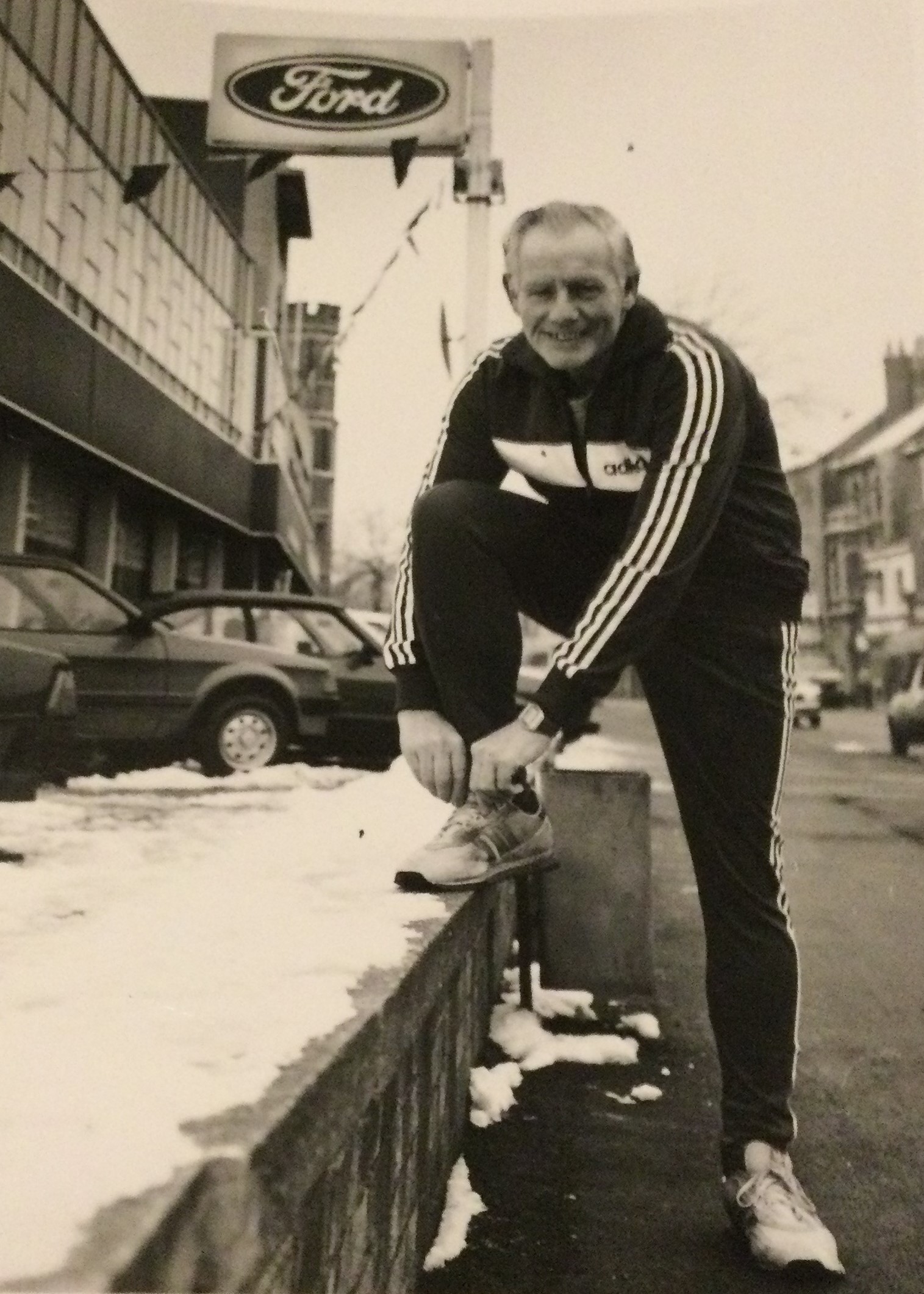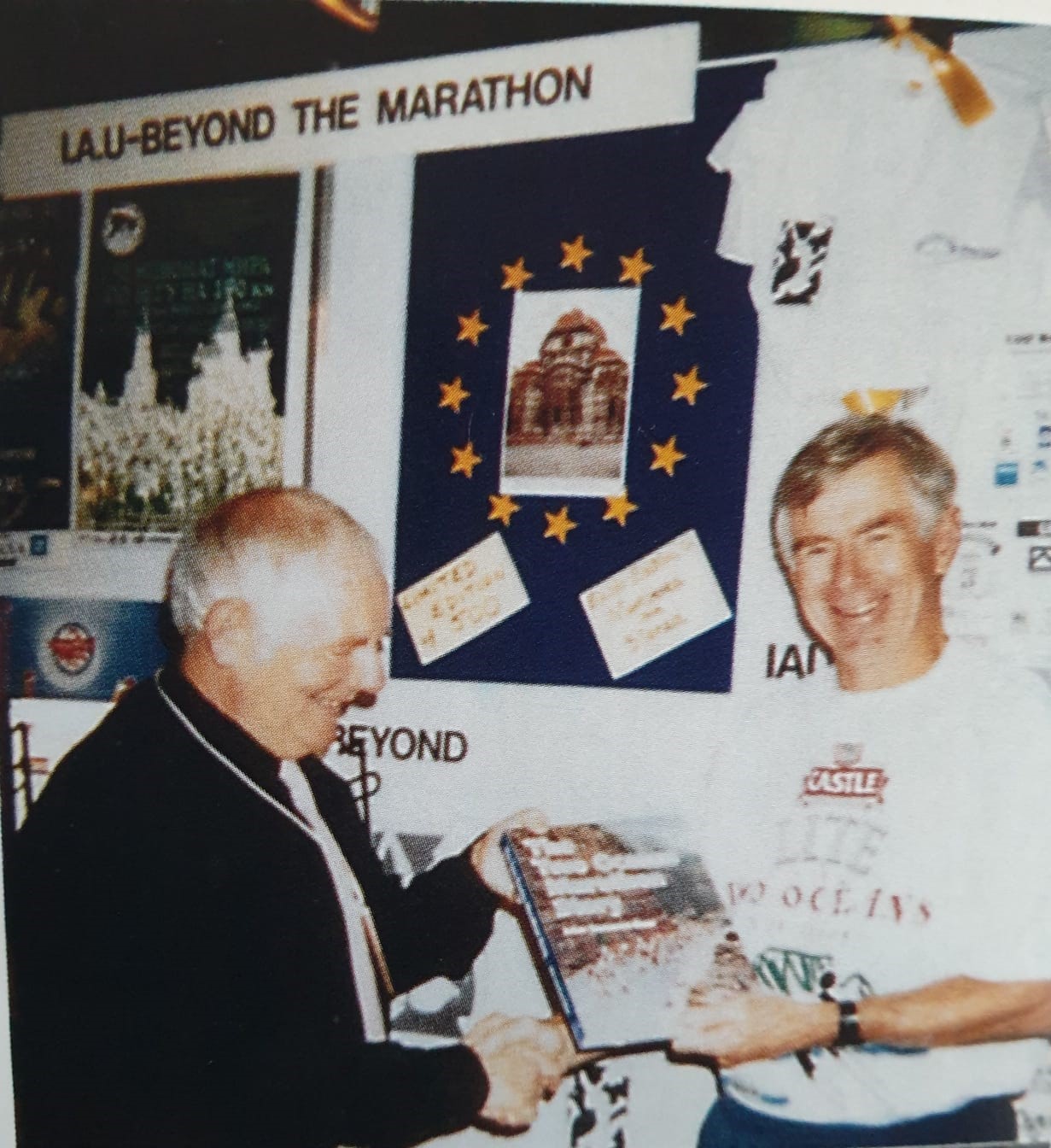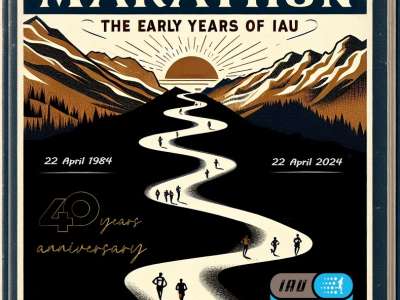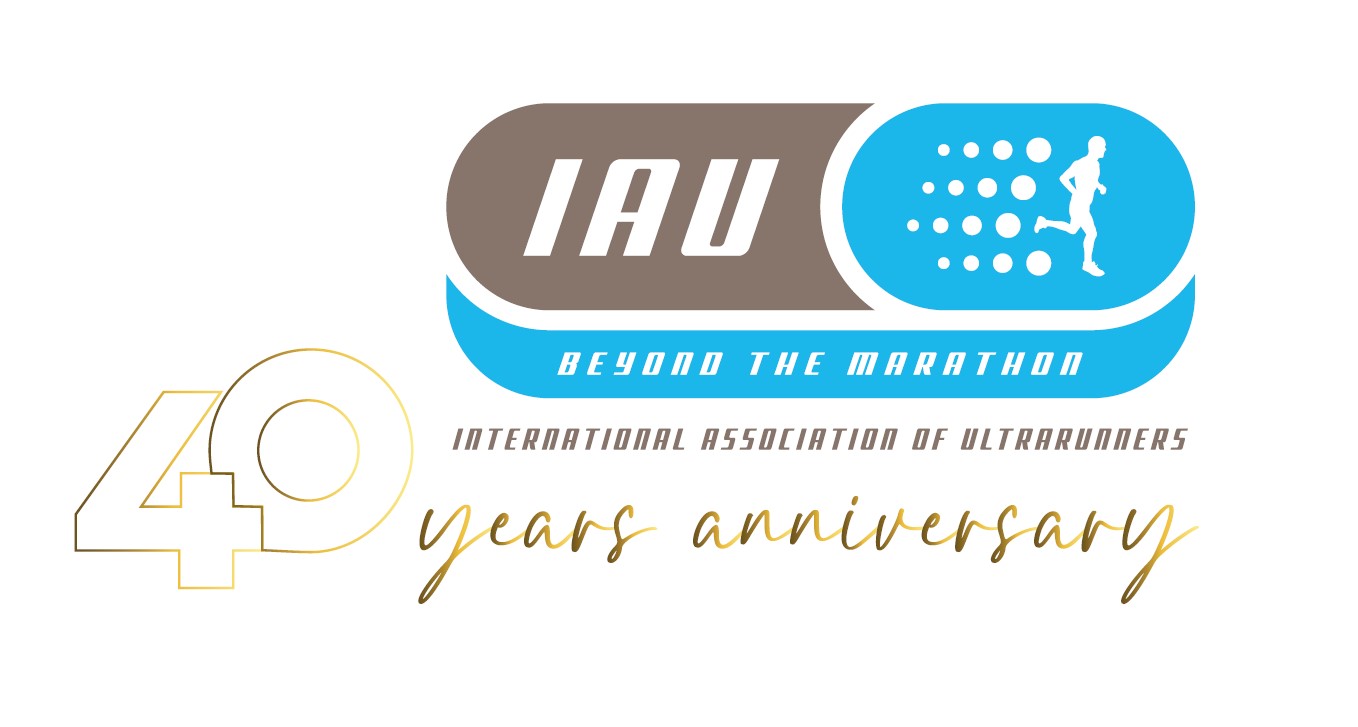It is April 22nd, 1984, when the International Association of Ultrarunners (IAU) was established. This was the milestone and a new chapter for long distance running. This is a story of the early years of IAU based on a cover article written in 2005 by the first and long-standing IAU President, Malcolm Campbell.
This is how Malcolm opened the 20 years story of IAU.
“When the good ship, ''IAU'' set off on it's maiden voyage in 1984 we were sailing towards uncharted waters. As Captain, I had a motley crew under my command. It consisted of four experienced ultrarunners and a statistician. All were enthusiastic and all played a valuable role as our course was set.”

Malcolm Campbell, IAU President 1984-2004, during his race accross America. You can read more about Malcom here
Ultradistance events, and in particular the 100km road race, become increasingly popular in Europe during the late 1970s and early 1980s. The first Six Day Race of modem times took place in the United States in 1980. Six Day Racing has it origins in the late 19th century when considerable financial rewards were available for the leaders. There was much competition between American and British runners during this period and the Six Day record was 1003 km 832m set by George Littlewood (GBR) at the Madison Squiare Gardens, New York in 1888.
It was early 1984 when Gerard Stenger, Malcolm Campbell, Edgar Pattermann, Dan Brannen, Tony Rafferty and Andy Milroy, become the Founding Members of the IAU. Malcom was chosen to be IAU President.
IAU Council members as of 1984 published at Ultrarunning Magazine in 1984:
- Edgar Patterman (Austria)
- Malcolm Campbell (England)
- Bruce Slade (England)
- Dan Brannen (U.S.)
- Gérard Stenger (France)
- Jacques de Roquefeuil (France)
- Werner Sontag (West Germany)
- Andy Milroy (England)
“A sense of direction is a useful asset for a Ship's Captain, whether he be Honest Sailor or Pirate, and very early in our voyage it become obvious we would, as an organisation need the support or at least approval of the International Governing Body of Athletics. This was the International Amateur Athletic Federation (IAAF) which later changed it's title to International Association of Athletics Federations.”
Malcolm Campbell
In order for IAU to obtain approval from IAAF it was necessary to show that IAU as organization is seriously concerned with developing the sport of ultradistance running and it was necessary to grow. In the early days IAU membership consisted mainly of National Ultrarunning Organisations and as consequence in 1987 for the first time the 100 km World Championships was held in Torhout, Belgium. It was a cornerstone to establish partnership with the IAAF. The IAAF Patronage was granted in 1988 just before the second 100 km Championships that took place at Santander, Spain, organized by Jose Antonio Soto Rojas (now honorary member of IAU).

The IAU ’s first meeting with the IAAF Cross Country & Road Running Committee took place in 1989. The meeting took place at Stavanger, Norway during the weekend of the IAAF World Cross Country Championships. Malcolm and Per Lind from Norway were present during that meeting, where the second IAU 100km Championships held in Santander, Spain in 1988 had been well reported. It was clear that IAU is on the right path for future development.
Another turning point took place in 1990 when after successful IAU 100k Championships at Deluth in US, IAAF amended their regulations to include 100 km as standard distance for international competitions. At that time the National Team competition has been included in the championships and this resulted in securing the IAAF Administration Grant for the IAU and Competition Grants for Federations.
From 1992 the IAU European 100km Championships and IAU 24 Hours European Challenge were introduced with both events taking place under the patronage of the European Athletic Association. These became very successful events and by 1997 it was possible to further promote the 24H events internationally.

Hilary Walker during the 1992 IAU 100 km European Championships in Winschoten, Netherlands
“As an ultradistance runner in the early days of the IAU, I knew those early IAU pioneers well and benefitted from the new IAU competitions. Personally it brought us recognition from our federation and we represented our country from 1990 onwards. One of my greatest rewards was winning the first European 100km Championships and I am very grateful for all the work that Malcolm and his team did for the first 20 years. Hopefully we are succeeding in carrying this forward today.”
Hilary Walker, IAU General Secretary

Chet Sainsbury (RSA), Race Director of the Two Ocean Marathon presenting "The Two Ocean Marathon Story" to Malcolm Campbell, IAU President, London, April 1997
The Executive Council in 1997 consisted of:
- Malcolm Campbell (GBR) - President
- Gerard Stenger (FRA) – Vice-President
- Dan Brannen (USA) - Secretary General
- Andy Milroy (GBR) - Technical Director
- Jose Antonio Soto Rojas (ESP)
- Harry Arndt (GER)
- Geoff Hook (AUS)
A General Council existed which consisted of National Ultrarunning Organisation (NUO) Members and this Council made suggestions to the Executive Council but it was not an electoral body. If the IAU was to keep pace with international development, radical changes needed to be made and a democratic structure introduced. During the annual meeting in September 1997 at the IAU 100 km World Cup in Winschoten, Netherlands it become obvious that Constitution needed to be written which would be acceptable in a democratic and workable sense. The matter was tabled for the agenda at next IAU meeting in Nakamura City, Kochi, Japan where the IAU 100km World Challenge at River Shimanto would take place on October 18th 1998. Key persons in the preparation of the Constitution were Dirk Strumane (Belgium) and Souhei Kobayashi (Japan). Both were appointed in 1999 as additional members of the Executive Council. It was based on a decision taken back in 1998 on the expansion of the Council from 7 to 9 members. There were divisions in the discussion on the extension but finally it was all settled in May 1999 and both Dirk and Souhei joined the Executive Council. The objective was to have the constitution ready for the inaugural Congress at Winschoten in September 2000.
In 1999 a lot of time was spent on preparing the Constitution and contacting Federations known to be interested in ultradistance running. These Federations became IAU Members and the NUOs in these countries became affiliated IAU Members. In the cases when a Federation declined membership the NUO of that country became the IAU Voting Member.

IAU Council Members at first IAU Congress in Winschoten, Netherlands
The inaugural IAU Congress at Winschoten, Netherlands in September 2000 was well attended and the Constitution approved by IAU Members. The following were elected to the Executive Council:
- Malcolm Campbell (GBR) – President
- Gerard Stenger (FRA) – Vice-President
- Jose Antonio Soto Rojas (ESP) - Director of Development
- Harry Arndt (GER) - Director of Competitions
- Dirk Strumane (BEL) – Director of Organisation
- Souhei Kobayashi (JPN) – Director of Asian Affairs
- Guy Godbillon (FRA) – Area Group Representative
- IAAF Representative
In addition a Technical Committee headed by the Director of Competitions was elected, a Records Committee headed by the Vice-President was elected and an Arbitration Panel headed by David Cosgrove was elected.
IAU - over 90 federations strong today, organizing championships in every corner of the word with hundres of labelled events worldwide, owes its strong influence globally due to the unwavering foundation laid down by its founding members in its initial years. 40 years of existance - is not a small feat for an international organziation. I hope you will join us as we celebrate this milestone for IAU. I thank you all for your continued support to your organization as we continue to promote and develop the sport in every region across the globe.
Nadeem Khan, IAU President
This concluded the first part of the history of IAU. We will cover more in upcoming publications. Please follow us for more information and updates in this special year.
IAU Executive Council
Aprill 22nd 2024



